Article Author: Michael Kennedy
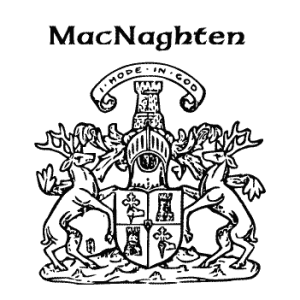 When John MacNaghten shot Mary Anne Knox in the coach at Cloghcor near Strabane on 10th November 1761, accidently or otherwise, he was hunted down by Captain Caldwell and his men as a brigand and a scoundrel. By the time he fell from the scaffold at Lifford, half-hanged, he was a romantic figure set in the folklore of his time. 250 years on the tale still abounds. Legend has it that the story was often told in front of an open hearth in many of the ‘big houses’ around the North West.
When John MacNaghten shot Mary Anne Knox in the coach at Cloghcor near Strabane on 10th November 1761, accidently or otherwise, he was hunted down by Captain Caldwell and his men as a brigand and a scoundrel. By the time he fell from the scaffold at Lifford, half-hanged, he was a romantic figure set in the folklore of his time. 250 years on the tale still abounds. Legend has it that the story was often told in front of an open hearth in many of the ‘big houses’ around the North West.
Romeo or rogue, brigand or beau, like him or loathe him, but remember him, you will! The name will attract the attention of even the not-so-curious. Not hanged, but HALF-HANGED! And when recounted to modern day primary school children they are enthralled. Frequently retold by raconteurs, or acted out on stage and television, the story is worth the telling!
On the Great Road between Lifford and Strabane on a dark December day in the year 1761 the hangman slipped the rope over the head of the nobleman, John MacNaghten. A large crowd had gathered from the surrounding hinterland of Counties Coleraine, (as County Derry was then known) Tyrone and Donegal. The story of MacNaghten had caught the ear of many a curious citizen; he had a certain romantic debonair presence and many came to sympathise. And so it was that, sent swinging from the gallows high with such force that the rope broke he came crashing down and landed among the crowd. Many in the crowd willed him to escape, claiming that this was a clear sign of divine providence. But he defied the public mood of the people with the never-to-be-forgotten words “I vow that no one will ever speak of me as Half-Hanged MacNaghten.” He returned himself to the jurisdiction of the hangman and, with a new rope, was despatched into the arms of eternity.
The MacNaghten family can be traced back to the twelfth century in Scotland with clan lands in Argyll and the Moray district. Some family members fought with John Balliol against Robert Bruce, while one fought at Flodden Field with James IV. The Irish connection arrived in Ireland in 1580 when Shane Dhu was appointed secretary to his grand-uncle Randal MacSorley MacDonnell, 1st Earl of Antrim. He lived at Ballmagarry, in Co. Antrim, about a mile from Dunluce Castle. His son Daniel built a house along the Antrim coast at Benvarden in 1636. Ownership of the house and estate passed to Daniel’s son, John who had two boys, Edmund and Bartholomew. Edmund had been born on 10 August 1679 and was taken to Derry by his mother at the time of the siege for protection from James II’s troops. He inherited an estate at Beardiville in Co. Antrim, while Bartholomew took ownership of the estate at Benvarden. Bartholomew was a merchant in Derry and a magistrate for Co. Antrim. He married the daughter of Alderman Henry McManus from Derry and had two sons, Bartholomew and John. John was born in 1724 (though Sir James Caldwell (Ref.1) claims he was born in 1722).
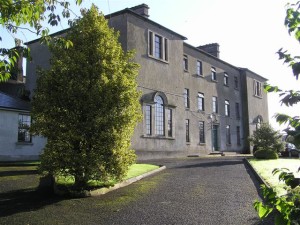
Royal School in Raphoe in Co. Donegal by Kenneth Allen, CC BY-SA 2.0, https://commons.wikimedia.org/w/index.php?curid=13694538
John received his early education at the Royal School in Raphoe in Co. Donegal. He graduated to Trinity College, Dublin in March, 1740. In Dublin John adopted a cavalier life style and spent more time gambling than studying. Sadly in August 1740 his father died and John inherited Benvarden, a substantial and fairly prosperous estate with an annual income of £600. His studies were curtailed and he left Trinity the following year, 1741. He continued to gamble heavily and, in order to repay his debts, he had to sell and mortgage large parts of the estate.
His fortunes were somewhat restored when he met and fell in love with Sophie Daniel from Co. Down. Sophie was the daughter of Richard Daniel, Dean of Down and, on marrying her, MacNaghten was able to pay off his accumulated debts with the substantial dowry inherited by Sophie. With the promise of reforming his gambling ways the newly weds set up home in Dublin. (Note 2)
But alas, he was unable to sustain his pledge to her and soon returned to his gambling ways. By 1756 he had accumulated significant debts and a warrant was issued for his arrest. In the confrontation that ensued the sheriff had to smash down the door to access the house, to take John into custody. His wife, Sophie, who was in an advanced state of pregnancy, was so upset by the incident that she died in the commotion. It is said that MacNaghten was heart-broken and contemplated suicide. Friends and family rallied to his support. Sophie’s brother-in-law, Lord Massarine, used his considerable influence to have MacNaghten appointed to the post of collector of taxes for the borough of Coleraine, a job which paid him a salary of £200 per year. John however had not changed his ways and soon had accumulated debts of £800. He was guilty of embezzlement of some of the tax money, was caught and lost his job. Massarine and friends had to repay the deficit.
In his hour of greatest need John MacNaghten was offered the hand of friendship from a life-long acquaintance, Mr. Andrew Knox of Prehen, an estate on the south side of Derry City, on the road to Strabane. Andrew was the M.P. for Donegal and had two children, George aged 18 and Mary Anne, aged 15. Macnaghten, in his desperation, had made several attempts to solve his solvency problems by unsuccessfully seeking the nomination for Parliament for the constituency of Bath. Success in this would have left him immune from arrest for debts.
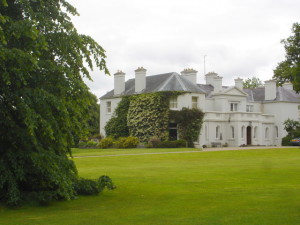
Benvarden House Co. Antrim by Kay Atherton, CC BY-SA 2.0, https://commons.wikimedia.org/w/index.php?curid=13545310
It so happened that Mary Anne Knox, who was a fine looking young lady, with light fair hair and fine complexion would, on marriage, inherit a dowry of £6,000. Mary Anne was greatly impressed at the attentions shown to her by this handsome, witty and sociable gentleman. Her mother Mrs. Knox was also impressed by MacNaghten and viewed him as a possible son-in-law. Benvarden House, Co. Antrim
According to Caldwell’s account of events it was at this point that circumstances seemed to accelerate for John and Mary Anne. MacNaghten believed that an offer of marriage would find favour with Mary Anne’s father so he approached Andrew with his proposal. Mr. Knox, who had by now become fully acquainted with MacNaghten’s past, turned him down. John asked that no further mention should be ever made of this offer, but he continued to woe Mary Anne and indeed led her to believe that her father had agreed to the match, though the agreement had to remain secret.
Shortly after this an event was played out which had a Mary Anne Knox significant influence on the plot. At the home of Joshua Swetenham in Derry MacNaghten and Mary Anne play-acted a marriage ceremony, reading the words of the service which were witnessed by a seventeen year old Andrew Hamilton. From that moment on that John MacNaghten claimed that this was a true marriage ceremony. Mary Anne, however, countered this claim by saying she had repeatedly added during the mock ceremony, “only if my father gives his consent”.
Unaware of these events Andrew Knox approved of MacNaghten and Mary Anne travelling to stay with a friend, William Wray, at Ards in Co. Donegal. They were due to stop at the home of John McCausland at Strabane and it was here that, according to the London account of 1762, John MacNaghten claimed his right to consummate the marriage. McCausland naturally refused, sent word of the affair to Andrew Knox at Prehen and forbade MacNaghten from travelling onwards with Mary Anne. MacNaghten followed after her and made the same claims at Ards. At this stage word had reached Andrew Knox. Mary Anne was sent home under escort and John MacNaghten was forbidden from visiting Prehen ever again.
There followed a series of claims and counter claims in the newspapers as John MacNaghten claimed Mary Anne was his rightful wife. When MacNaghten came to live with his cousin, Charles McManus in Derry, Mary was sent to Sligo as the family feared she might be abducted. MacNaghten followed her to Sligo where he encountered a friend of the Knox family, John Magill, M.P. for Rathcormick. They fell out and MacNaghten challenged Magill to a duel. Due to the influence of drink the aim of both was poor and John MacNaghten was shot in the leg.
Andrew Knox now brought the matter to the attention of the Ecclesiastical Court in Derry to ask that the alleged marriage be declared void. MacNaghten refused to allow Andrew Hamilton to act as witness but instead asked that the case be referred to the Metropolitan Church Court in Armagh. The case eventually arrived at the Court of Delegates of Ireland and Knox won the ruling and was awarded damages of £500. Writs were issued against MacNaghten by the Knox family in relation to threats made against them. The Lord Chief Justice issued another writ against MacNaghten because of further threats made against Justice Scott after he had ruled in favour of Knox.
MacNaghten fled to Bath in England to avoid the writs and fines. He still had aspirations of becoming an M.P., this time by seeking nomination for the borough of Carrickfergus. But his reputation and behaviour ruled against him and he once again began to accumulate debt through gambling. It was at this time that he had gone to stay with a friend, William Hickey. Hickey recorded in his memoirs that his mother considered John MacNaghten capable of committing violent acts!
While in Bath John received word that Mary Anne was in Swanlinbar, Co. Cavan, to ‘take the mineral waters’. John made his way there dressed as a sailor, wearing a short white wig, a checked shirt and coat tied with a rope. He found lodgings in a cabin on Mary Anne’s route to the well. The landlady, however, discovered gun powder and shot hidden in the sleeve of his shirt and reported him as a robber. A warrant was issued for his arrest but on giving himself up to the bishop of Kilmore John MacNaghten soon became a celebrity around Cavan. He explained to the bishop that he had been driven by passion and love for Mary Anne to claim what was rightfully his. He persuaded people that he had been wronged by the Knoxs. His sad story, his personality and charisma won him many friends and supporters in high places.
MacNaghten had always held out hope of inheriting the large estate of Beardiville from his elderly uncle Edmund. To his dismay Edmund, aged 80, had found a young bride and was intent on producing an heir of his own. According to Caldwell this persuaded MacNaghten that he was left with only one option, the abduction of Mary Anne Knox.
On 10th November 1761 Andrew Know was due to depart from Prehen on his way to Dublin for the opening of Parliament. It was John MacNaghten’s intention to intercept the Knox party at Cloghcor, five miles outside Strabane, at a point where the road narrows. Using the alias Smith for fear of detection he had gone to the area with his trusted Cloghcor Inn servants, George MacDougal, James MacCarrel and Thomas Dunlap and had taken lodging with a hearth money collector called Irwin on the banks of the Dennett river.
From information received from some of his staff that MacNaghten had been seen in the area Andrew Knox had reason to believe that an ambush was imminent and so he mustered a strong protection party to accompany him. Andrew Knox’s brother, James and a servant rode in front, followed by Mary Anne’s brother George Knox. Locals, however, believe that many of the party’s weapons, including blunderbusses and pistols, had been rendered useless by servants in the pay of MacNaghten.
The post chaise pulled in at the Coach Inn at Cloghcor before 11.00 a.m. for a change of horses and refreshments. As the group resumed the journey the coach passed the cabin belonging to the Keyes family: John MacNaghten and two others ran out from behind a dunghill, armed with pistols, into the middle of the road and demanded that the coachman halt the coach. One of Knox’s loyal servants, a blacksmith by the name of McCullough, attempted to intervene and was shot in the hand by MacNaghten. He was further shot in the knee and groin. At this point Andrew Knox drew his pistol but it failed to go off. MacNaghten then obtained reloaded pistols from the cabin and aimed them at the carriage. Mary Anne threw herself over her father to protect him just as MacNaghten discharged a pistol shot which struck the young girl. As this was going on a Mr. Love emerged from behind a turf stack and injured John MacNaghten with swan shot ( type of shot discharged from a blunderbuss). John and his companions realised the gravity of the situation and decided to make their escape from the scene of the ambush.
George Knox left the scene at a gallop to seek The Knox’s Coach help from Caldwell’s Enniskillen Dragoons stationed at Strabane. Dr. Law was sent for to tend to Mary Anne who had been removed from the carriage to the floor of Keyes’ cabin. She died four hours later. The dragoons arrived within the hour and set off in all directions in pursuit of John MacNaghten and his companions. A reward of 100 guineas was offered for his capture.
MacNaghten was much closer to the scene than the soldiers realised. He had found refuge in a hay loft in Sandville belonging to a bleacher, Thomas Winsley. It was reported that two local soldiers, Private Reed and Corporal Caldwell, had noticed Winsley’s carrying food across the farm yard to the loft. They followed her and found MacNaghten hiding above. He was taken by cart to Lifford Jail. Dunlap was later caught near his home in Ballybogey. MacNaghten was kept in confinement at the insistence of Andrew Knox as there were rumours that locals would attempt to free him. MacNaghten’s brother Bartholomew visited him in Lifford jail and paid for food and medical treatment for his wounds.
On 7th December 1761 John MacNaghten was carried on a bier into the great courtroom in Lifford. MacNaghten defended himself by claiming that he had never intended to harm Mary Anne or any other person; his intention was merely to take her away. He claimed in his defence that Mary Anne had written asking him to intercept the postchaise but the prosecution denounced the letter as a forgery. Throughout the trial MacNaghten referred to Mary Anne as his wife. He also begged that the life of John Dunlap be spared as he was an innocent man acting as a loyal servant. Legend has it that many in the court were brought to tears by the pleading and oratory of John MacNaghten.
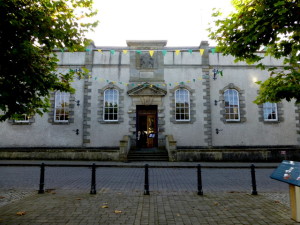
© Copyright Kenneth Allen and licensed for reuse under this Creative Commons Licence.
The evidence against John MacNaghten was overwhelming. It was claimed in court that MacNaghten was heard to shout ‘Shoot! Shoot Mary Anne!’ The jury took little time in returning a verdict of guilty on both MacNaghten and his faithful servant Dunlap. Judges Mountainy, Scotard and Smith pronounced the death sentence and many in the courtroom sobbed. The high sheriff declared that the execution would be held on Tuesday 15th December 1761. MacNaghten was returned to his cell in Lifford jail and was visited by his brother Bartholomew again. The brother also called with the local minister and paid him the sum Lifford Jail & Courthouse of three guineas for the cost of burial.
According to the Belfast Newsletter account, MacNaghten was taken from the jail at 1.00pm on the 15th and remained calm as he was taken to the place of execution. It was said locally that no one would volunteer to build the gallows and members of the Knox family themselves erected the structure. It was further claimed that no blacksmith could be found to remove the fetters from his wrists. Indeed a hangman was brought in from Cavan to perform the hanging. MacNaghten made no speech from the gallows but had been assured that his head would not be displayed like a common criminal at the front of the jail.
Following the successful second attempt at the hanging MacNaghten was taken from the gallows and laid to rest in an unmarked grave at the rear of Patrick Street graveyard. The man who vowed not to be remembered as Half-hanged was thereafter immortalised in his own words.
Ref 1
One of the accounts of the life of JohnMacNaghten was printed anonymously in London in 1762. It has recently been established that the source was Sir James Caldwell. Caldwell was born c. 1720 and lived near Beleek in Co. Fermanagh. After spending time in France, Italy and Austria he returned to Ireland in 1748. In 1760 he formed a company of Light Horse Regiment and was based in Strabane. He had taken an interest in the case of MacNaghten and Knox. It was his troopers who captured John MacNaghten at Sandville.
Ref 2
Information regarding the MacNaghten family, the different spellings of the name, and reference to Sophie Daniel has kindly been provided in the following reference by Angus MacNaghten, great, great, great grandson of Edmund of Beardiville, John MacNaghten’s uncle:- Letter from Angus MacNaghten, Ascot, Berkshire to David Canning 9th May 1990
Ref 3
A concise dissertation on the human passions exemplified in the life and untimely death of John MacNaghten Esq; (lately executed for the murder of Miss Knox in which the particulars of this trial and a narrative of his conduct and behaviour, are faithfully recited. Written in Ireland by an impartial observer) London 1762
Ref 4
Some authentic particulars of the life of the late John MacNaghten Esq (of Benvarden who was executed in Ireland on Tuesday 15 December for the murder of Miss Mary Anne Knox; only daughter of Andrew Knox, Esq. of Prehen, representative in the late and present Parliament for the County of Donegal. Compiled from papers communicated by a gentleman in Ireland to a person of distinction of that kingdom now residing here. London printed: and Dublin reprinted by G. Faulkner in Essex Street, MDCCLXII. . London & Dublin 1762
Note – Recently it has been established that the author was most likely Sir James Caldwell due to the intimate details of minor characters and his defence of Mary Anne Knox)
Printed Sources
- Half-hanged MacNaghten, David Canning in ‘Mourne Review’, Strabane History Society 1991
- Half-hanged MacNaghten, Darinagh Boyle, 1993 Guildhall Press
- Half-hanged MacNaghten Project, David Canning & Michael Kennedy, Strabane Teachers’ Centre 1989 W.E.L.B.
- Andrew Knox, Bishop of Raphoe & his Descendants, Hempton (Publisher), Derry 1892
- A concise dissertation on the human passions exemplified in the life and untimely death of John MacNaghten Esq; London 1762
- Belfast Newsletter:
- 14th November 1761
- 15th November 1761
- 22nd December 1761
- Derry Journal:
- 12th April 1968
- Some authentic particulars of the life of John MacNaghten , London and Dublin 1792
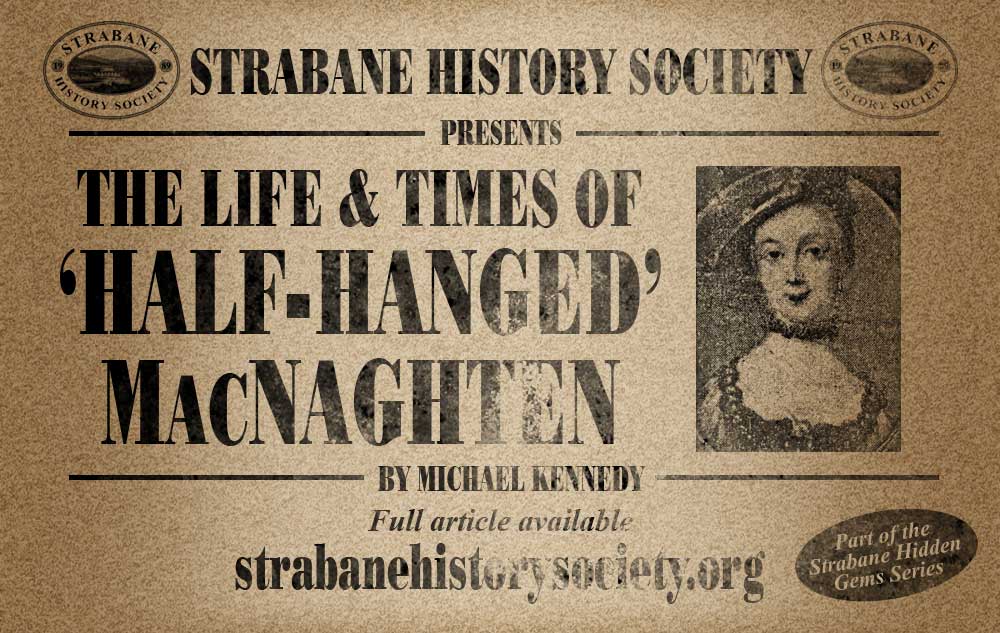
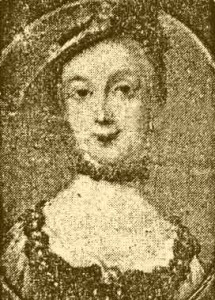
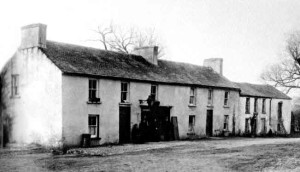
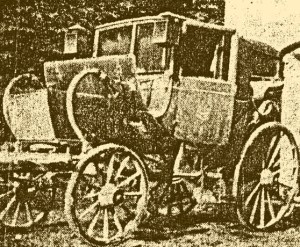
I found your version of the life of John McNaghten very interesting. It is similar to
several other recounts that I have read.
I am a descendant of the Bartholomew McNaghten, that you mentioned, who was John’s brother and who visited John in jail. None of the McNaghten family acknowledged this very sad event for > 150 years. Could it be that their spelling of their surname changed as a result of this event? Variations in the spelling later included: McNaghten /M’Naghtan / McNaughten and finally MacNaughton.
Pingback: Why We Admire Lovable Rogues Like Han Solo And Deadpool ⋆ Pacific news
My nane is Ivan Knox, who presently live at Corcam, Ballybofey, Lifford, Co Donegal, I beleive that I am related to Andrew bishop of Raphoe 1604 1619 and died in 1632 in Rathmullen Abbey Co. Donegal. I have written the full story of the Knox records dating back to 450 when the Knox’s were in the South of France and have followed records printed in their name till the year 2000. My web site is http://www.knoxthedonegalrouted.net You will see the opening page in the name 1600 YEAR OF KNOX JUST Click on the picture and the record will open within several minutues and just follow the text. Enjoy.
This record covers the times and events of The Rev Andrew Knox and his family during these years. Please e-mail me at ivanknox3@gmail.com as to your opinion of the records and if your family has objections as to informatiion written therein. If there is anything that you wish to have alteratiions made please make contact. 5th March 2019
Regards with thanks
Ivan Knox. born 8th May 1935 at Labadoo, Killygordon, Co. Donegal and records show that we came into Ireland From Scotland in or about 1625 toa nestate very convenient to Rev Andrews William Knox Clonleigh Est and to Alexander at an Estate at Lower Donoughmore, Castlefinn Co. Donegal All three estates are seperated by around four English mile. and are very convenient to each other.
Are you the Ivan Knox who wrote me years ago? An Ivan Knox sent me a picture of him standing next to John Knox the Reformer’s statue. Was that you who sent it to me?
Connie Knox Beck
Hi, Tracing some history. Did John Macnaghten have a daughter Cassandra who inherited Benvarden and sold it to the Montgomerys? Does anyone have any detail on her and who she married (a Mr Hardy?) thank you
Hi, thank you for your message. We regret that we cannot answer all enquiries due to the sheer volume of requests and the amount of work involved.
Some helpful links:
1. Try our Facebook public forum as members may be able to assist.
2. Our Genealogy Resource link: http://strabanehistorysociety.org/genealogy/
3. Failing a speedy response here, please contact us directly via: http://strabanehistorysociety.org/contact-us/
4. Or come to one of our events: http://www.strabanehistorysociety.org/
Good luck!
Yes, Cassandra was his daughter, and she did marry ?Joseph Hardy, an army officer. I have his full details somewhere in my files. I have visited BenVarden and spoken with the Montgomery family who lived there until as recently as 2015 if not after that date. They told me that Cassandra never knew anything about her father’s hanging etc until she read it in a newspaper as an adult. She was so distraught apparently, that she then decided she would never have any children of her own.
Hi, it would be great to learn some more about Joseph Hardy, as I believe he resided in Waterford for many years and I am researching the connection – and also, what happened to Cassandra as Mr Hardy subsequently had children. Is it possible to connect with you on this?
Sure. I have only today {JUNE,2021] read your request. my email = glenysbolland@gmail.com. I live in Australia.
There never was or has been a county Derry. There was a county Coleraine and a county Tyrone out of which there was a county Londonderry.